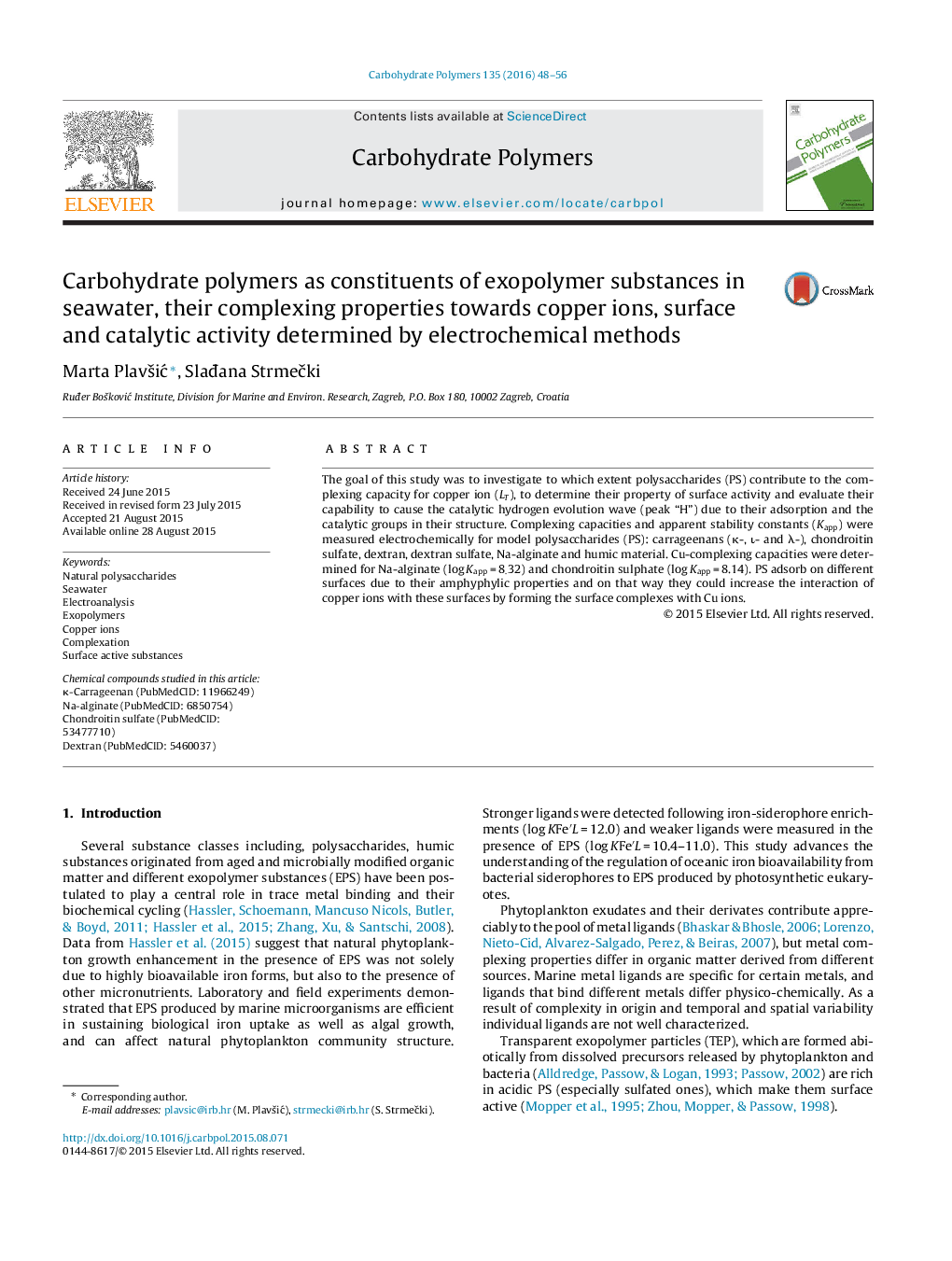| Article ID | Journal | Published Year | Pages | File Type |
|---|---|---|---|---|
| 1383543 | Carbohydrate Polymers | 2016 | 9 Pages |
Abstract
The goal of this study was to investigate to which extent polysaccharides (PS) contribute to the complexing capacity for copper ion (LT), to determine their property of surface activity and evaluate their capability to cause the catalytic hydrogen evolution wave (peak “H”) due to their adsorption and the catalytic groups in their structure. Complexing capacities and apparent stability constants (Kapp) were measured electrochemically for model polysaccharides (PS): carrageenans (κ-, ι- and λ-), chondroitin sulfate, dextran, dextran sulfate, Na-alginate and humic material. Cu-complexing capacities were determined for Na-alginate (log Kapp = 8.32) and chondroitin sulphate (log Kapp = 8.14). PS adsorb on different surfaces due to their amphyphylic properties and on that way they could increase the interaction of copper ions with these surfaces by forming the surface complexes with Cu ions.
Keywords
Related Topics
Physical Sciences and Engineering
Chemistry
Organic Chemistry
Authors
Marta PlavÅ¡iÄ, SlaÄana StrmeÄki,
